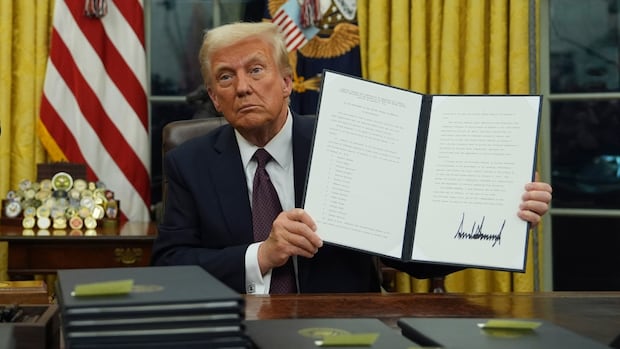
What are executive orders in the US and how powerful are they?
US President Donald Trump is back in the White House, ready to immediately overhaul the government using the fastest tool – the executive order.
On his first day, he sought to increase domestic energy production and end diversity, equity and inclusion programs in the federal government, among other actions.
An incoming president signing a series of executive orders is standard practice. They allow the president to wield power without action from Congress, but there are also limits to what the orders can achieve.
A primer on how presidential power works and its often fleeting influence.
What are executive orders?
Basically, they are signed statements about how the president wants the federal government to be run. These may be directives to federal agencies or requests for reports.
Many orders can be unchallenged, such as federal workers on the day after Christmas. They can also make major policies. For example, former President Joe Biden signed an executive order to set up regulations on artificial intelligence.
The new US President Donald Trump signed a number of executive orders on his first day in office. CBC Washington correspondent Alex Panetta has what you need to know.
But executive orders—and their policy siblings, the proclamation and policy memorandum—are also used by presidents to pursue agendas they can't get through Congress.
New presidents can and often do rescind orders from their predecessors.Trump rescinded 78 orders and actions signed by Biden on his first day. Among Trump's resignations was Biden's executive order, which revoked some of the executive orders Trump had signed during his first term.
According to the American Bar Association, the orders do not require congressional approval and cannot be directly overturned by lawmakers.However, Congress can block the order by removing funding or creating other obstacles.
How common are executive orders?
There have been several thousand executive orders throughout U.S. history, according to data compiled by the University of California, Santa Barbara's American Presidency Program. George Washington signed eight executive orders and Franklin Delano Roosevelt signed 3,721.
In his first term, Republican Trump signed 220.
Democrat Biden had signed 160 as of December 20.
Executive orders are often about political messaging
Trump has signed numerous executive orders related to his campaign promises.
They included a temporary hiring freeze for federal agencies, a mandate that federal employees return to their offices and a review of federal investigations that Trump suggested had targeted his supporters. He also promised an executive order to give more time to TikTok. for sale.

Trump asked Rep. Jeff Van Drew, Republican of New Jersey, to write an executive order to stop the development of offshore wind farms to generate electricity. But it's entirely possible that Trump could also introduce many planned executive orders over time.
Many of Trump's measures are likely to draw Democratic opposition.
And in a few key cases, the orders will largely be statements of intent based on Trump's campaign promises.
There are limits to the power of executive orders
Both Congress and the courts can block executive orders.
For example, Congress in 1992 rescinded an executive order by then-President George W. Bush that would have created a human fetal tissue bank for scientific research, passing a measure that said the order “shall have no legal effect.” Congress can also reject it funding agencies and obstruct enforcement of the order.
There are also legal challenges based on the argument that the president exceeded his legal authority.
When President Harry Truman tried to seize steel mills during the Korean War, the US Supreme Court ruled that he had no authority to take private property without Congressional authorization.

